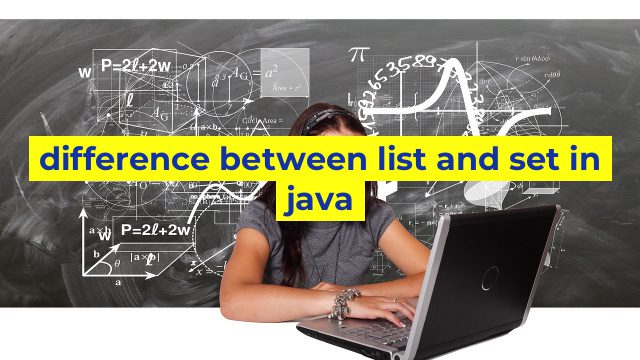The Difference Between List and Set in Java
When it comes to Java programming, there are several data structures available that can be used to store and manipulate data. Two of the most commonly used data structures in Java are lists and sets. While these two data structures may seem similar at first glance, they have some fundamental differences that set them apart. In this article, we’ll take a closer look at the differences between lists and sets in Java.
What is a List in Java?
A list in Java is an ordered collection of elements that allows duplicate values. In other words, a list is a sequence of elements that are maintained in a specific order. Lists in Java are implemented using the List interface, which is a subtype of Collection. Some of the key features of lists in Java include:
- Elements in a list can be accessed by their position (index).
- List allows duplicate elements.
- Lists are ordered, which means that the order of elements is maintained.
Some of the commonly used list classes in Java include ArrayList and LinkedList.
What is a Set in Java?
A set in Java is an unordered collection of elements that does not allow duplicate values. In other words, a set is a collection of unique elements. Sets in Java are implemented using the Set interface, which is also a subtype of Collection. Some of the key features of sets in Java include:
- Elements in a set cannot be accessed by their position (index).
- Set does not allow duplicate elements.
- Sets are unordered, which means that the order of elements is not maintained.
Some of the commonly used set classes in Java include HashSet and TreeSet.
Key Differences Between List and Set in Java
Now that we’ve covered the basics of lists and sets, let’s take a closer look at some of the main differences between these two data structures in Java:
- Order: Lists maintain the order of elements while sets do not maintain any particular order.
- Duplicates: Lists allow duplicates while sets do not.
- Access: Elements in a list can be accessed using their index or position, while in a set, there is no support for positional access.
- Performance: Lists are generally better suited for large collections of elements where positional access, iteration and modification are required. Sets are better suited for checking the presence of an element in the collection. They also offer faster operations such as adding, removing and checking for an element in the collection.
Conclusion
In conclusion, lists and sets are two useful data structures in Java that have their own unique features and use cases. While lists maintain the order of elements and allow duplicates, sets do not maintain order and do not allow duplicates. The choice between a list and a set usually depends on the specific requirements of your Java program. By understanding the differences between lists and sets in Java, you can choose the appropriate data structure for your application and efficiently store and manipulate data.
Table difference between list and set in java
| Property | List | Set |
|---|---|---|
| Duplicates | Allows duplicates | Does not allow duplicates |
| Order | Maintains order of elements | Does not maintain order of elements |
| Implementation | Implemented as ArrayList, LinkedList, etc. | Implemented as HashSet, TreeSet, etc. |
| Manipulation | Allows addition, removal, and modification of elements | Allows addition and removal of elements, but not modification |

